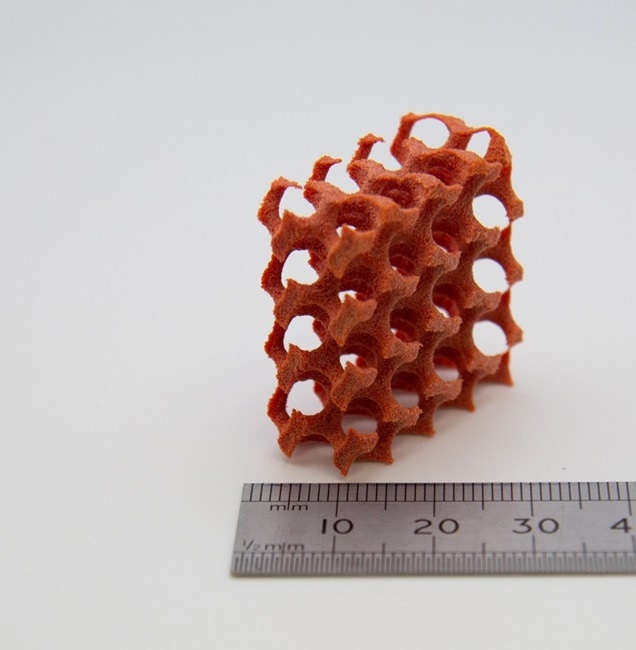In a study published in Nature Communications, researchers from the University of Nottingham’s School of Chemistry and Faculty of Engineering describe the development of supercritical carbon dioxide to generate an efficient, effective, and clean process for coating PA-12 polymer particles used in 3D printing.

Image Credit: University of Nottingham
Scientists and engineers have created a new coating for plastic particles used in 3D printing that significantly enhances their functioning and opens up new opportunities in commercial applications.
The researchers established that the new coatings can add color, anti-mold, and fungal qualities to the printing process.
Powder bed fusion, often known as laser sintering, is one of the most widely used commercial 3D printing processes. In this procedure, a layer of freely flowing polymer powder is applied, and the powder is melted layer by layer using a laser directed by a computer-generated design.
A new layer of powder is added to the previous layer, and the laser melts the powder together while attaching it to the layer below. This procedure continues until the designed part is finished, which usually involves thousands of layers.
Polyamide-12 (PA12) is a strong plastic frequently used in 3D printing to create complicated and intricate parts, particularly in the automobile and aerospace industries.
The real benefit of 3D printing or additive manufacturing is in the design and production of bespoke and unique objects, but its limitations are in the materials and palette of available properties that limit the overall application space. This new process provides an easy route to the development of a wide range of material capabilities without compromising processability.
Christopher Tuck, Professor, Centre for Additive Manufacturing, Faculty of Engineering, University of Nottingham
The addition of color coatings and anti-fungal and anti-mold qualities are two important features the new technique could offer. Currently, manufacturers have two options: gray or white powders with color added later. However, the team has developed a spectrum of colored polymers that coat the PA-12 particles.
There are a few challenges facing the 3D printing industry due to limitations on the functionality of the polymers used. To tackle some of these challenges we have created a simple but effective approach to adding functionality by coating the particles. We’ve designed the colored shell polymer so that it matches the mechanical and thermal properties of the printing polymer. Most importantly we have demonstrated this with the key polymer (PA-12) that is ubiquitous to the industry. Our new colored polymeric powders work perfectly in the existing commercially deployed machines.
Steve Howdle, Head, School of Chemistry, University of Nottingham
Objects made with PA-12 are unsuitable for moist environments due to mold and fungal development. The newly developed shell coating can also be used to create coatings that prevent this, creating new opportunities for using 3D-printed products in new applications.
Howdle concluded, “A key benefit of this process is that it can easily be incorporated into current commercial 3D printing processes and this could be potentially transformative for the industry in widening scope by introducing new functionality, simplifying processes and importantly achieving all of this sustainably.”
Journal Reference:
Krumins, E., et. al. (2024) A facile one step route that introduces functionality to polymer powders for laser sintering. Nature Communications. doi:10.1038/s41467-024-47376-4